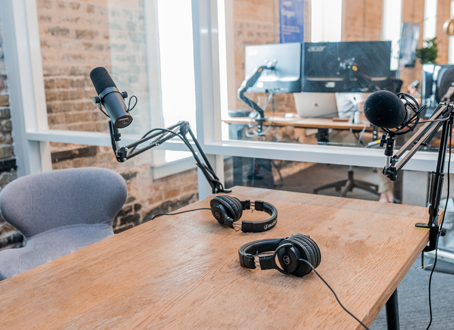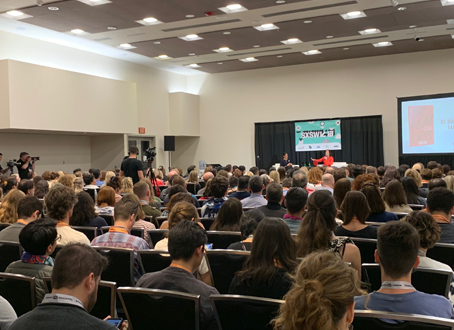The Myth of Failure is the fourth post in the Case Foundation’s Myth of the Entrepreneur series. This series is intended to intentionally examine, and change, the stories our culture tells about entrepreneurship. For more information on the Case Foundation’s approach to the Myth series and Inclusive Entrepreneurship, please check out our introductory piece. We encourage you to join the conversation using #Ent4All on Twitter.
The Myth of the Entrepreneur series is based on research conducted by Michael Chodos, former fellow with the Case Foundation and currently at the Beeck Center for Social Impact & Innovation at Georgetown University, with contributions from Aaron Coleman, former Case Foundation intern.
Failure is a core part of the story of entrepreneurship. Each year about 6 million new businesses start up, but they don’t last long. By five years, half are gone. By 20 years, almost all are gone.
In most of our discussions around entrepreneurship, the genuine agony, trauma and shame around failure is discussed solely as a learning experience and bump on the road to inevitable success. We promote and analyze the building of a startup, but we leave the failure part untouched until the entrepreneur has been successful with another venture. Then, that failure is lauded as an important part of their journey that made them who they are. But why wasn’t that important moment in the entrepreneurial journey something we cared about when the failure actually happened? What are the immediate learnings that could be shared?
At the Case Foundation, we understand the importance of failure. It is baked into our organization’s culture and a key part of our Be Fearless campaign. Failure is an important tool in the innovator’s toolbox. If we expected everyone to get it right on the first try, we wouldn’t have some of the most important inventions and innovations of our time. Many inventions happen incrementally, and many creative figures don’t have success their first time out. Henry Ford, Walt Disney, Steve Jobs, Oprah Winfrey and Steven Spielberg were all fired or rejected early on. Persistence and the ability to build upon past failure are what make breakthroughs happen. (Provigil) As Robert Sofia, a marketing consultant to the Fortune 500, writes, “The way in which we respond to our failures has the power to shape us. If we sulk, falter, and permanently fail, we risk being shaped in a damaging way. If we take specific steps to overcome our failures, learn from them, and improve as a result, they will make us stronger.”
But what about the downside of failure? Failure deeply affects the lives of the entire team, investors, vendors and customers. When a business goes under there are real, live people who lose their employment, families that lose their seed stage investing and entrepreneurs who can be left with overwhelming debt. The stories of why companies shut their doors can be learning opportunities for other ventures, but only if we have a culture that acknowledges that while failure to some degree is inevitable, it is not glorious and absolute failure is something that many entrepreneurs can’t afford.
When looking at the statistics on diversity in entrepreneurship, we must ask ourselves, “Are we setting up some groups to fail more than others? Or are we judging the failure of some entrepreneurs more harshly than others? And by idolizing failure, are we leaving out an entire class of entrepreneurs?” It’s easy to look at statistics like “failed entrepreneurs are far more likely to be successful in their second go-around, provided they try again” and miss the significance of that last part of the sentence – “provided they try again.” Women CEOs and CEOs of color already receive significantly less venture capital than their peers, yet we expect them to bounce back from failure just the same. But diverse entrepreneurs face additional obstacles. Because of the wealth distribution in this country, many families, particularly those of aspiring entrepreneurs of color, do not have the $20,000-$50,000 in “friends and family” funding to start a first venture, let alone a second. And if women are twice as likely as men to shut down their businesses because of lack of capital, we have to consider that factor when searching for ways to support women entrepreneurs during and after their first ventures.
Social science has begun to shed some light on the disproportionate affects diverse entrepreneurs may experience related to failure. Some researchers have begun to associate the stereotype threat, a phenomenon typically assessed in a classroom or test-taking setting, with success in other areas. Stereotype threat posits that if women entrepreneurs know that they are going to be judged more harshly when they’re pitching, they will have a worse performance. We must begin to assess the external biases that affect how we assess, value and judge all entrepreneurs, particularly those that are struggling or have survived a previous failure. And entrepreneurs must look for ways that they can begin to build up networks, mentors and role models that break down these stereotype threats and show they can survive all stages of growing a business, including possible failure.
Failure is not an enemy; it is a learning tool. At a macro level, it can free up workers to become the new team of newly forming entities that will hopefully be more efficient. It can free up entrepreneurs to pursue new ideas. And it can free up investment dollars for future ventures. However, to trivialize failure as some popular stories of entrepreneurship do or to call it a right of passage, it takes away from the seriousness of the risks entrepreneurs and their supporters face.
So the question is, how do we begin discussing failure in such a way that helps to mitigate disaster, while still celebrating entrepreneurial tenacity to overcome barriers and find success when the odds are stacked against them? And how do we ensure that failure doesn’t close the doors on entrepreneurs from particular backgrounds while leaving those doors open for others? At the end of the day, we still love the grit and determination of our entrepreneurial visionaries like Ford and Jobs, but it has to be a path available to all entrepreneurs with innovative ideas, not just the privileged few.
Join the conversation on Twitter at #Ent4All and be sure to check out the full Myth of the Entrepreneur series!





